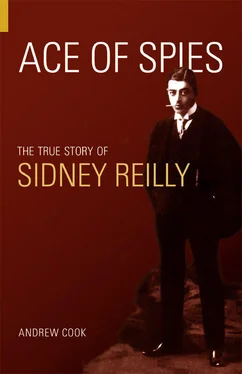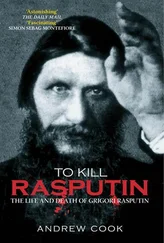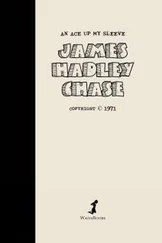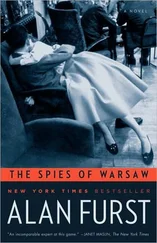When the inevitable conflict between Russia and Japan broke out into open hostility on 8 February 1904, it was as a result of a surprise Japanese attack against the Russian Pacific fleet at Port Arthur. With no declaration of war prior to the attack, it bore many of the hallmarks that would characterise the assault on the American Pacific fleet at Pearl Harbor some thirty-six years later. Although the attack on Pearl Harbor was carried out in daylight by air and the attack on Port Arthur was at night by torpedo boats, the theory behind both acts of war was the same. The Japanese had calculated that the only possible way they could defeat a larger and theoretically stronger power was by attacking without warning and in so doing striking a blow from which the enemy would have great difficulty recovering.
As a result of superior intelligence, Japan’s Admiral Togo was not only aware of the positions of all Russian ships but was equally aware of the layout of Russian minefields and search-light locations. This enabled the Japanese to move through the minefields unhindered and to emerge from the darkness unseen by Port Arthur’s search lights, which on the night of the attack were mysteriously disabled. Although Togo’s attack succeeded in crippling the Russian Pacific fleet, it was not until 1 January 1905 that the Japanese actually captured the port. Neither side had foreseen the lengthy siege of Port Arthur and the Japanese in particular were not prepared for a winter campaign. Although ultimately victorious, 58,000 Japanese lives were lost in comparison to the 31,000 Russians who perished defending the town.
Credit for Togo’s initial attack on Port Arthur, which was one of the most brilliantly conceived and co-ordinated assaults ever undertaken, was very much the result of the advance intelligence operation which enabled him to access Russian defence plans. How he managed to obtain these has been shrouded in mystery for nearly a century. When the US army, led by Gen. MacArthur, arrived in Japan in August 1945, it set about examining Japanese intelligence records. A large consignment of material was taken away by MacArthur’s intelligence chief, Gen. Willoughby, and sent to Washington for detailed analysis. Students of the Russo- Japanese War hoped that here at last would be revealed the answer to the mystery. Sadly, no hint as to the identity of the agent who procured the plans for Togo was ever found in the records, copies of which now reside in America’s National Archives in Washington DC. As a result, it was widely assumed that the solution to the riddle had been lost or destroyed.
In Moscow’s Military Historical Archives 6,000 miles away, however, a dusty file of intelligence reports finally exposes the Russians’ number-one suspect. The file, not seen by unauthorised eyes before the downfall of Soviet communism, contains a report from April 1904 addressed to ‘His Excellency the Commandant of Port Arthur’ and marked ‘Secret’. 24In it, the conclusions of an in-depth investigation into the theft of harbour defence plans are revealed, and the culprit named as one Ho-Liang-Shung, a Chinese engineer who worked under the Head Marine Architect, Svirsky. Ho-Liang-Shung had a detailed knowledge of the harbour, its fortifications and mine field. He also had access to the harbour defence plans. According to the report, he had prior knowledge of the Japanese attack as early as 26 January 1904. On 23 February and again on 8 March, large sums of money were deposited into his bank account. On 10 April he attempted to leave without an exit permit and was detained by the port gendarme. In spite of this, he managed to escape confinement and was never seen again.
While convinced of Ho’s guilt, the Russians were clearly of the view that he had not acted alone and was very much a minor player in a wider web. The identity of his ‘go-between’, the person to whom he had given the plans and who had paid the money into his bank account, was never established. Intriguingly, some twenty-seven years later, when Margaret Reilly wrote a manu-script about her husband’s life, she referred in passing to a port engineer acquaintance he had known in Port Arthur – ‘Ho-Ling-Chung’. 25While the spellings are at variance, the chances of there being two engineers with such similar names, moving in similar circles, must be viewed as somewhat remote. Bearing in mind the intimate relationship between Ginsburg & Company and the Pacific fleet, it is highly probable that Reilly would have come into regular contact with port and naval officials at all levels. In fact, many of the naval contacts he utilised in later years were initially made during his time in Port Arthur.
Reilly and Ho are further linked by their mutual disappearance, for shortly after Ho’s escape, Reilly too departed. In 1917 Moisei Ginsburg recalled that Reilly had ‘suddenly vanished’, leading the local Russians to conclude that he was a spy. 26Winfried Ludecke and Richard Deacon have both maintained that Reilly concluded the Russians had their suspicions about him after discovering someone associated with East-Asiatic was in the employ of Russian intelligence. 27This theory again finds corroboration in Moscow archives, which reveal that one of Russia’s most valuable espionage finds was a British citizen by the name of Horace Collins who indeed happened to work for the East-Asiatic Company. Collins was born on 12 March 1870 in Hever, Kent. 28His father was a well-to-do farmer, and Horace grew up working with horses, eventually taking up an apprenticeship as a jockey at the nearby Lingfield stables. On completion of his apprenticeship in 1893 he went to the Far East, where he eventually secured a job at the stables of the Japanese Emperor. It was during this period that he learnt to speak Japanese and a Chinese language. Although moderately successful as a jockey, it was not long before he took to business, making the most of his oriental languages and travelling widely on behalf of various trading houses in China, Korea, Japan and eastern Russia.
There is no indication in Russian records as to how Collins was recruited as a spy, although money may well have been a factor. It would seem from the commentary in his file that he was not exactly prospering in business when he was first recruited. From the Russian point of view, he was most useful by virtue of his language abilities and his knowledge of Japan and her people. Accordingly, the Russians were paying him $300 per month plus expenses. 29
Whether Reilly’s discovery of the Russian agent was made by chance or through a third party is unknown. However, bearing in mind the suggestion that he was involved in an affair with a woman by the name of Anna, one candidate stands out in particular – Anna Grigoryevna Collins, Horace Collins’ Russian-born wife. 30She not only knew of his work for the Russians, but was also known to be having an affair with an associate of her husband.
Having made a swift exit from Port Arthur, Winfried Ludecke suggests that Reilly headed for Japan in the company of ‘a lady with whom he had been flirting’. 31Whether Anna and the lady companion are one and the same is conjecture. If Reilly did go to Japan, he could not have stayed there very long, for in June 1904 we find him in Paris. 32During the brief time he spent in the city he renewed his acquaintance with William Melville, whom he had last seen in 1899, shortly before his hurried departure from London. Reilly’s meeting with Melville is most significant, for within a matter of weeks Melville was to enlist his help in what would later become known as the D’Arcy Affair.
Authors writing about Reilly’s role in the D’Arcy Affair have often relied on Reilly’s own tale of what happened. Other sources lead to a rather different train of events. The background to the affair is succinctly set out in a letter of reminiscence dated 30 April 1919 from E.G. Pretyman MP to Sir Charles Greenway, the chairman of The Anglo-Iranian Oil Company, 33in which Pretyman recounts his own involvement some fifteen years earlier, as Civil Lord of the Admiralty, in securing the Persian oil concession for Britain, which led indirectly to the founding of the Anglo-Iranian Oil Company:
Читать дальше












